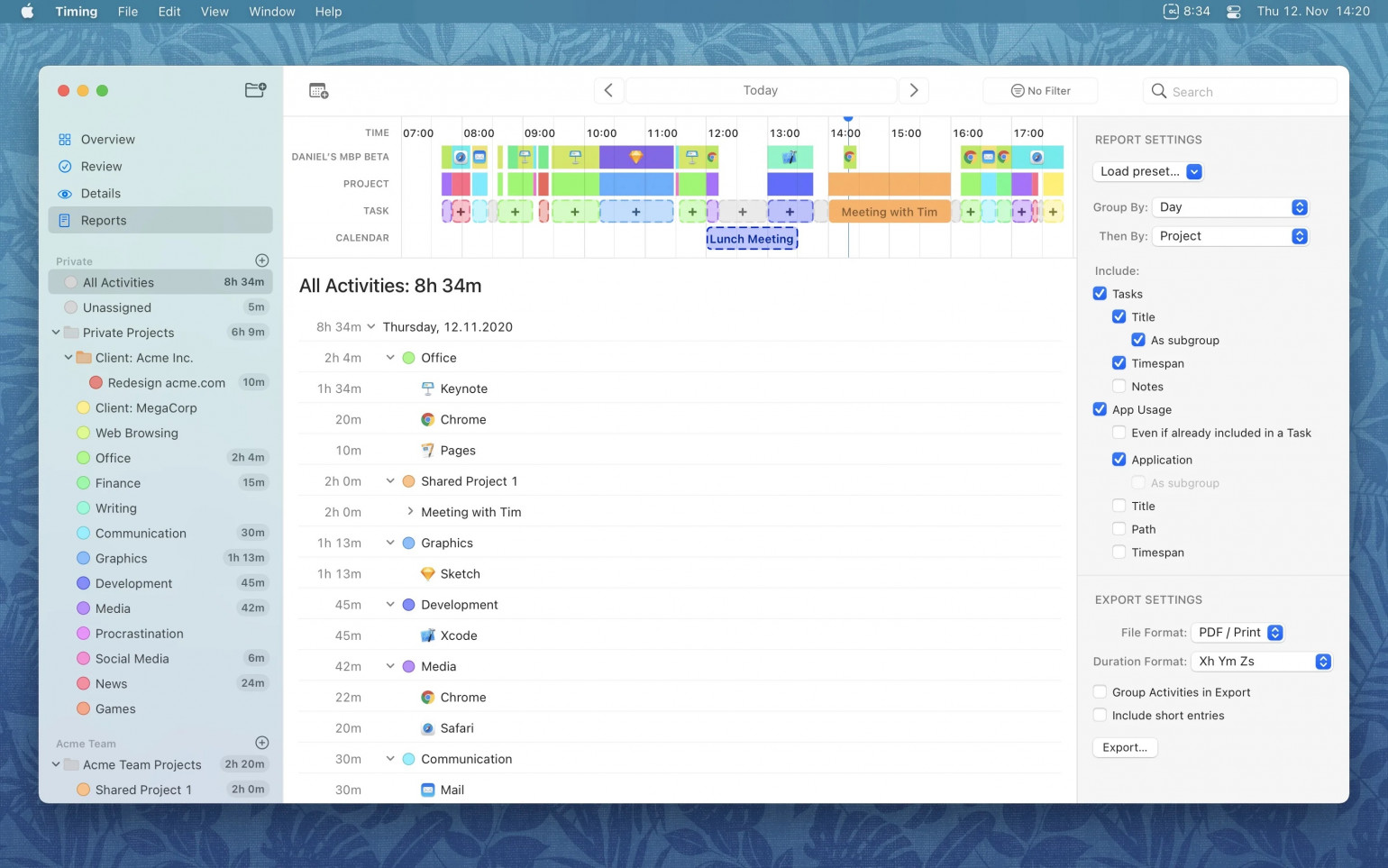How to Create Trusting Relationships with Your Clients (and a More Satisfying Freelance Career)

When your clients come to you for help, they are putting their problems in your hands. They seek your knowledge and expertise, your time, and your labor. Each client takes a risk when they hire you. Even if they already know the quality of your work, they assume an opportunity cost every time they engage with you.
If you want your clients to come to you right away when they need help, they need to trust you. They need to know that you have the solutions for their problems and that you will meet their needs in a fair, organized, and honest way.
We have to be honest though: Building trust with your clients is not quick. It takes time, effort, and attention to detail. You have to work for their trust, building it little by little over time. Some clients will trust you after the first job. Other clients require years of partnerships before you become a trusted ally.
In this article, we are going to explain why it is important to build trust with your clients, then we will offer some strategies to build that trust.
Building trust with your clients is not quick. It takes time, effort, and attention to detail. You have to work for their trust, building it little by little over time. Share on X
Why It’s Important to Build Trust with Your Clients
When clients trust you, they come straight to you when they need help. They do not want to work with anyone else. They may even adjust project scopes and deliverables to meet your availability.
Clients who trust you are willing to pay premium prices. They know your work and your ability to deliver. They would rather pay higher prices than take risks with unknown freelancers.
When the job is done, clients who trust you are more likely to give positive reviews to their friends and colleagues. They will rave about the freelancer they work with who makes their life easier.
Most importantly, trusting relationships with your clients are far more personally satisfying than relationships with clients who do not trust you yet. Trusting clients feel less of a need to manage you. They do not feel the need to contact you every day or iron out every little detail. This makes your life easier.
10 Strategies to Build Trust with Your Clients
Building trust with your clients does not happen overnight. It requires diligent work throughout the relationship – right from the beginning. Use these tips to make your clients trust you. If you do them well, you will cultivate strong and positive relationships that ultimately give you a satisfying career.
1. Figure out what your clients value
Everyone has values. We often value the same things, but to different degrees. If your values do not match your clients’ values, there is going to be conflict. So your first step is to figure out what your clients value.
For instance, imagine you have a client who strongly values meeting your commitments. He wants you to meet your deadlines and complete all of the work you agree to. In this case, you might add extra space in your deadlines to ensure you are always on time.
Another client might value quick work, even if it is not perfect. In this case, you should always make sure to submit quickly, even if you have not perfected all of the details.
How do you uncover your clients’ values? The easiest method is to simply ask. Ask questions about what is most important to them and what they think will make the relationship successful.
2. Never sell services they don’t need
Like most freelancers, you probably want to bill your clients as much as possible. Increasing the amount on their invoice is a powerful way to generate more revenue. So it is tempting to push as many products and services on your clients as possible.
However, if you want to build trust with your clients, it is important to think about your long-term relationship. If you sell them on services they do not need, it won’t be long before they realize what you have done. They will feel cheated and used, and they will guard themselves against anything you recommend in the future.
Instead, get your client to trust you by helping them save money. Focus on the products and services that are most likely to help them achieve their goals. In some cases, it may even make sense to encourage your clients to downgrade their service if you think a lower offering is all they need. This would cement you as their ally.
3. Be an authentic person

Some freelancers like to mask their personality whenever they interact with a client. They sanitize their language, avoid any topic that could be considered offensive, and adopt a sterile, corporate-like demeanour. They try to disguise themselves as a big business.
But in most cases, this comes across as inauthentic. Clients tend to feel like they are working with a robot, when really they want to build a partnership with a human.
It’s much easier to be authentic. You will be a happier freelancer if you just act like yourself and work with the clients who appreciate that.
Do not be afraid to interject your personality into your client interactions. Let the real version of yourself shine through. Sure, some clients may not like you, and that dislike may turn them toward other freelancers. But the clients who do like you will want to work with you for the long term.
4. Create transparency in your billing
There’s always a bit of anxiety for your clients when it comes to billing, especially if you charge hourly. Since they can not see exactly how and when you work, they wonder if you are actually working during those hours or if you are doing other things (like working for other clients).
Unfortunately, there is no way to completely reassure your clients that your reported hours are honest. The best you can do is offer enough evidence to make them trust you.
What kind of evidence? It’s best to give your clients documentation of how you spent your time. But instead of manually typing your time worked in an Excel sheet or a Google Doc, this documentation should come from a report in an application. Basically, you want to give your client something that is not simple to fake.
Time tracking is the answer here. An automatic time tracking tool like Timing can provide transparency into hours worked and activities performed. It captures your activities while you work without intervention. There is no need to hit start, pause, or stop on a timer. Just keep focusing on your work while Timing records your time automatically, then review your time when you want to.
Furthermore, Timing provides a level of accuracy that is not available for time tracking apps that require you to push “start” and “stop” timers. Timing is 100% automatic, which means nothing falls through the cracks. This adds to transparency and trust.
When you are ready to submit your hours to your client, simply export a report from Timing from the Reports tab. If you categorize your activities into projects and clients, you can export only the activities that are relevant. If you work with a team, you can download their reports as well.

Timing records everything so you never have to worry about spreadsheets again. There’s a free 14-day trial to see for yourself! Download the free trial.
5. Create opportunities for face-to-face interactions

These days, most of your business occurs over email, Slack/Teams, and a project management tool. There is no need to meet face-to-face when work can easily take place asynchronously.
However, face-to-face interactions are key to building relationships. They help you and your client develop camaraderie and trust. Simply recognizing that you are a real person can go a long way toward making you more trustworthy than many of the other people your clients work with every day.
Can you communicate solely face-to-face? It’s possible but unlikely. A few key meetings here and there are helpful – perhaps once a month – but don’t force video or in-person meetings. Your clients would not appreciate spending that much time with you. In most cases, an email or quick Slack/Teams message will suffice.
6. Own your mistakes and fix them
We all make mistakes, no matter how hard we try to avoid them. At some point (if you have not already) you are going to make a mistake. It might be as simple as a typo in an article. Or it might be something more damaging that costs your client time and/or money.
If you make a mistake, take responsibility, apologize, and take steps to make it right. Express genuine regret without deflecting blame. You may not always be able to fix the error, but for the sake of your relationship, you should do your best. If you make an honest attempt, your client will likely forgive you.
Confessing and correcting your mistakes shows that you’re not just thinking about yourself. It means you have the client’s best interest in mind; that you care about the overall relationship.
On the other hand, when your client makes a mistake, give them the chance to save face, let them communicate errors, and forgive their mistakes quickly. Help them create a correction course that works for both parties. Do not blame them or show your frustration.
7. Show them that you care
Unlike non-freelancers, you are intimately aware of how your time relates to money. It is tempting to avoid any interaction with your clients that does not directly impact your revenue. You might think, “Why bother with small talk when I can’t bill for it?”
However, non-work interactions are powerful tools to build relationships. A quick check-in call to ask how things are going can mean the world to your client, especially if they are on the fence about your relationship. Complimenting them on a big achievement, wishing them “happy birthday,” or sending a Christmas card can turn a work relationship into something far deeper.
Show interest in whatever is important to them. For instance, if they brag about their child’s recent achievement, ask a few simple questions to learn more and try your best to show genuine interest. It may seem manipulative, and is a little bit, but showing even the slightest interest can make people feel valued and respected.
Also show interest in their business. Ask questions about their strategy, marketing approach, and broader business objectives. Take their goals seriously and look for ways to align your work with their needs. As an expert, you may be able to help them in new areas.
8. Create peace of mind through communication

Your clients want to feel like you are taking good care of them. They want to know that you take their problem seriously and are working your hardest to provide solutions. If you give them peace of mind, they will trust that you are capable and able to fulfil their needs.
How do you give someone peace of mind? With communication. Lots of communication.
Communicating with your clients is a simple way to make them feel more comfortable about the relationship. Your goal is to tell them what to expect, keep them informed along the way, and then show them results at the end.
But communication does not mean spamming them with dozens of emails or phone calls. It means creating communication systems that keep everyone informed. For instance, you might send a timesheet report at the end of each week to update the client on the progress of each project. Or you might invite your clients to your project management tool where they can see how and when tasks are completed.
It also helps to be responsive to their communication. When a client sends you an email, does it take you a week to respond? If so, that client spent the whole week thinking and worrying about something. You do not have to respond to emails immediately, but in order to develop trust with your client, try to make yourself available for communication at least once a day.
9. Don’t exaggerate potential results or your skills
When you are trying to work with a new client, it is tempting to offer them the world. You might want to make big promises about your abilities and the results you can achieve. You may exaggerate how quickly you can work. You might give them a price quote that is on the lower end of your estimate.
Overselling and exaggerating almost never works out for you or the client. The client ends up with a higher price or poorer results than they expected. You have to sheepishly explain why you could not produce the results you offered or why the price is higher. The client will feel like they did not get their money’s worth. They won’t hire you again. No one is happy.
In order to create trust, deliver exactly what you promise or better. Manage their expectations carefully to ensure that you can meet your end of the bargain. Ideally, you should under promise a bit to dazzle them with a little “extra” value.
Each project should include a clear project brief. This is a document that explains the scope of the project, its goals, and how you will contribute. It should also lay out any tasks that the client (or their team) should complete. Identify your deliverables, any relevant dates or deadlines, and expected results (especially if the results impact the client’s final price).
If the client has needs that you can not meet, the best course of action is to admit that honestly. “Sorry, but I do not think I am the right freelancer for you,” is an easy way to back out of the deal. Explain that your skills or availability do not meet their needs. If possible, refer the client to a freelancer who would be a better fit.
10. Treat each client as an individual
Like most freelancers, you probably go after a specific type of client. You know who you help the most, so it makes sense to work with as many of those people as possible. Sometimes it is easy to treat each client like a paycheck – an obstacle to overcome to get to the invoice – rather than a person with problems, needs, and preferences.
Treating each client individually also means you should speak their language. Mirror their tone, words, and work style. If they are formal and professional, be formal and professional. If they are casual and friendly, do the same.
Stick with the tools they find most comfortable, as well. If they would rather have Zoom meetings than type long emails, make yourself available for meetings. Do they prefer Trello over Asana? Using their tools may make things more complex for you, but it supports the overall relationship.
Going Forward
Like we said, building trust takes time. The strategies outlined above will get you started, but you must apply them consistently throughout the relationships with your clients.
Over time, your clients will learn to trust you as an ally – someone who cares about their needs and keeps their interests in mind – and they will turn to you whenever they need help. Most importantly, your career will grow more satisfying as you spend less time hunting for new clients and more time working with the people you like.
